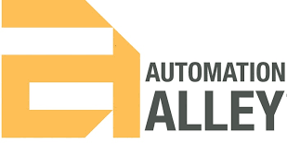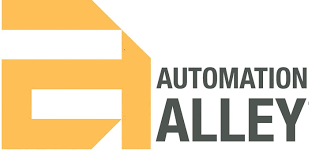Thought Leadership July 2024
Industry Recommendations for Big Data and IoT
Big Data Article by Automation Alley
In today's rapidly evolving manufacturing landscape, the integration of the Internet of Things (IoT) is no longer a luxury but a necessity. A connected business, leveraging IoT, captures and utilizes real-time data to enhance decision-making processes and maintain a competitive edge. By harnessing this data, companies can optimize manufacturing speed, identify and address defective parts, allocate staffing efficiently, manage assets, streamline product delivery, and monitor supply chain status, among other things. Developing a robust IoT ecosystem is crucial for manufacturing firms aiming to maximize efficiency and connect seamlessly with other industries. Embracing Industry 4.0 through IoT not only drives operational excellence but also ensures sustained competitiveness in an increasingly interconnected world. Below are key considerations for manufacturers on their Industry 4.0 adoption journey:
Create an Effective IoT Ecosystem
The IoT ecosystem is paramount for modern manufacturing. This involves developing a robust and efficient network system that connects seamlessly to physical equipment. Key components of such an ecosystem include scalable cloud infrastructure, high-quality device connections, and stringent cybersecurity measures.
Scalable and Adaptive Cloud: The cloud must be scalable and adaptive to meet the growing demands of production systems. By ensuring the cloud can handle increased processing power and memory, companies can save money by avoiding the need for new systems as the business expands. An adaptable cloud also allows real time adjustments to production demands as workloads fluctuate.
Reliable Device Connections: Devices, ranging from supervisors' smartphones to AI sensors guiding robots on the production line, are crucial for sending and receiving critical data. A high-quality connection within the IoT ecosystem minimizes lag time and potential work stoppages, keeping decision-makers informed about manufacturing output, material usage, and staffing requirements.
Efficient Gateway Communication: The gateway facilitates communication between the cloud, devices, users, AI systems, and data analysis applications. Unlike simple home devices, industrial gateways must be fast, capable of handling large data volumes, and secure.
Robust Cybersecurity: Given the immense amounts of sensitive information transported and housed within the IoT ecosystem, employing the latest cybersecurity software and protocols is imperative. Regular audits of the entire defense system and extending cybersecurity measures to every device are crucial to protect the system from potential threats.
Read these recommendations in full in our Integr8 Playbook, “Transformative Synergy: Exploring Big Data and IoT,” here.
Big Data and IoT Recommendations for Academia
Learn how to prepare the next generation of big data and IoT innovators with these recommendations for academia.
Learning how to build an Internet of Things ecosystem and understanding how data is collected and examined is critical for students as they prepare to enter the workforce, as careers in automation and technology require proficiency in those areas.
However, academic institutions must do more than teach the status quo; they must prepare the next generation of college graduates to become innovators and push beyond the current standards and practices. Academia is the place to begin finding new ways to collect and interpret data by improving the IoT ecosystem and digging deeper into data while encouraging imagination and creativity.
Improving the IoT Ecosystem
The IoT ecosystem comprises interconnected devices, networks, cloud, users, and software that allows for the movement of data and its analysis. Educational leaders must take the initiative to integrate IoT technology and interdisciplinary collaboration into the curriculum at all levels, empowering students to harness the power of data and innovation to tackle real-world challenges and drive positive change in their communities.
From elementary school to college, immersing students in IoT-related technology while also breaking down silos in education to merge disciplines will produce optimal outcomes. Using computers and mobile devices is part of everyday life for young children in the 21st Century, so it is an excellent time to pique their interest in understanding how they are built, how to write operating software, what's needed for cyber defense, and ways to network these devices together and store the information they collect. After an introduction to the basics of the hardware and software that make up the IoT, the next step is to teach students the importance of collecting data and how to interpret it. Analysis is the opportunity to utilize math, statistics, probabilities, and social sciences to understand the impact of data-based decisions on a community.
Read this article in full in our Integr8 Playbook, “Transformative Synergy: Exploring Big Data and IoT,” here.
At Automation Alley, our mission is to help businesses thrive in the rapidly changing digital economy by equipping them with the knowledge, insights, and tools to develop a software-first mindset that leverages the power of automation, AI, and other cognitive technologies. We believe that by working together, we can build a stronger, more innovative, and more competitive economy for the future. Visit automationalley.com.



















